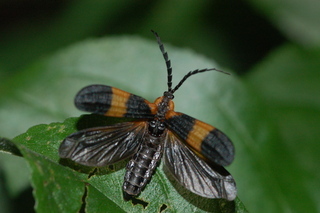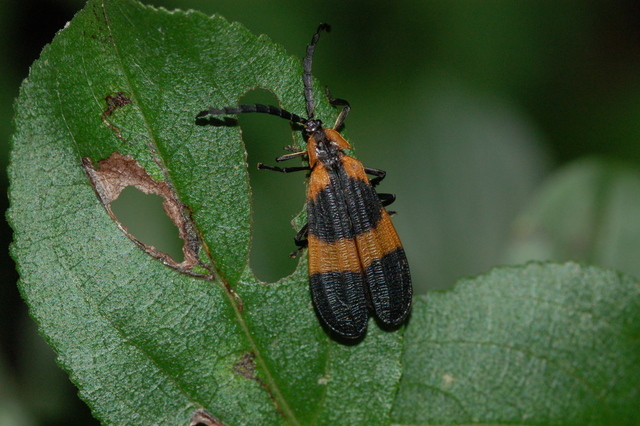Interesting beetle facts
After the Calopteron reticulatum larvae hatches, as it grows,
it protects itself with the poisonous chemicals it has in its
body segments (Boca and Matsuda 2003; Grzimek 2004: 319)
In a study done by Miller (1998), when a C. reticulatum larvae
was placed near a snail, the snail crawled upon the larvae head
for which the larvae proceeded to attack and eat the snail.
Although there is mimicry with the Lycidae family, a Lepidoptera
moth known as the Syntomid, mimics Calopteron reticulatum
and other new-winged beetles by also having banded coloration
patterns on its wings (Marshall 2008).
Calopteron reticulatum's common name, the Banded
Net-Winged Beetle not only because of its banded coloration on
its wings, but also from the ridgd patterns on its wings that
look like nets (Eisner et al. 2005).
View our References

